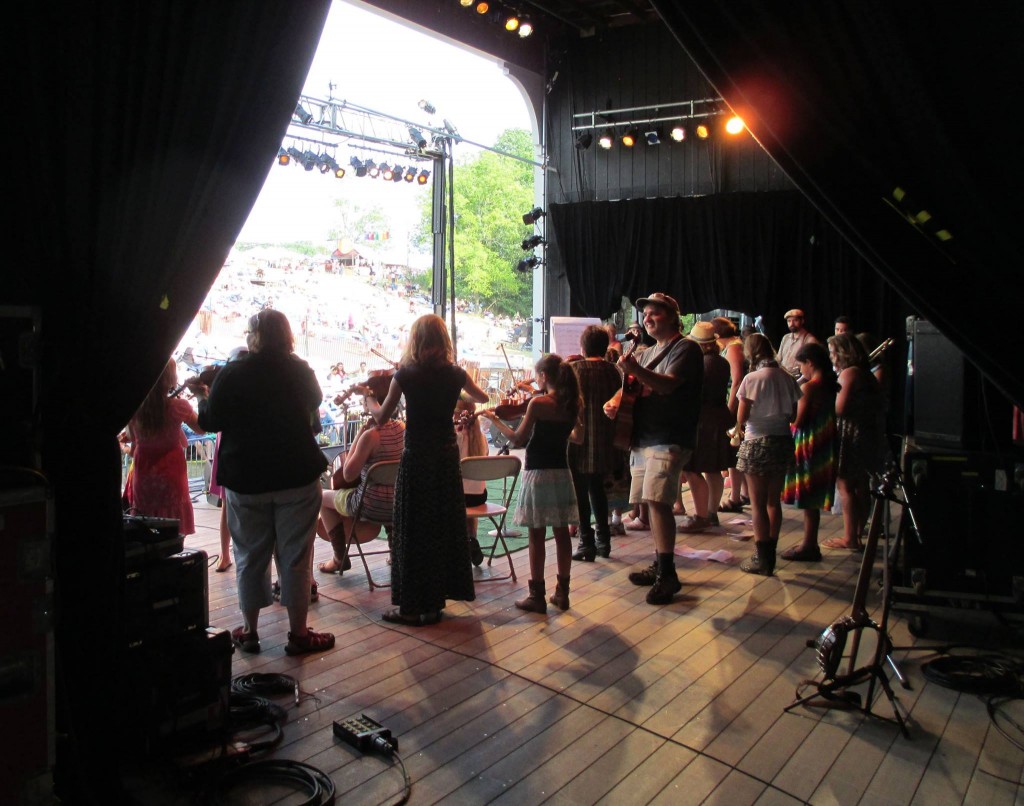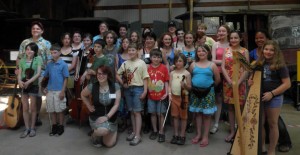Fiddling Fiddling Demystified Weekly Class Great Groove Band Hand Made Tunes

Five days with you at the 2019 Festival of American Fiddle Tunes taught me more than two years of conventional theory courses! You understand the interplay between knowing what you’re doing and feeling what you’re playing, and how to teach that connection to people of all backgrounds. Your classes, in person and online, show me I’m a part of something greater and I cherish our time together as some of the most formative in my life as a young teacher.” Mikela Valenzuela, OR, string teacher and fiddler
“Your lessons have given me invaluable insight into the techniques that I’ve been missing. Between discussions on bow handling and usage, rhythms, patterns, shuffles, etc, using the fiddle for accompaniment, applying chord theory to the fiddle, workshops on bringing emotion and feeling into the music, learning ways to write tunes, not to mention the styles associated with Acadian, Irish, Scottish and old-time fiddling, we have covered a huge range of method and technique in the course of the last 16 months or so! And, there is so much more yet to do, I have no intention of backing out now – it’s sort of like drinking from the fire-hose, as the saying goes.” Jon Davis, Fiddling Demysitified class member, 2020-present
“You made theory a fun puzzle, a tool for opening doors to playing music more easily with others. That’s huge, moving people past the fear that ‘theory is hard or boring or won’t relate to what I want to play anyway.’ Then we immediately applied it – so important! People used the new information to start trying things that sounded good, even if they hadn’t processed the concepts yet.” — Susan Conger, music teacher and participant, 2014 Smith College workshop: “The Art of Groove”
“Donna, thank you so much for the wonderful workshop. I really appreciate your ability to break the style down to the elements – exciting and inspiring. I love your approach to the tunes and your analysis. Thank you again for the hard work and passion for this music.” — Jim Garber, Poughkeepsie Québecois fiddle jam
I retired from teaching at Smith and Amherst Colleges and began a weekly group class online in April 2022. I co-teach these now with fiddle brother George Wilson. We explore the joys and challenges of fiddling on Wednesdays from 5-6 pm Eastern time. Come and get your groove on!
Private lessons
I’ve taught online for individuals and groups for years and I’m happy to work with teachers who want to integrate fiddling into their menu for students. My free fiddling resources page also has some useful materials.
Most of my students are adult learners and many are returning to music after not playing for years. My motto is: “no shame, no blame.” Learning happens when we let our fear of failure fall away. A wise friend once comforted me with a simple truth “If you do not know a thing, you just do not know it yet.”
We separate the practical (and practicable!) skills, learning tune patterns with the left hand and rhythm grooves with the right. Then, combining hands, we use postural awareness to build tension-free and efficient playing techniques – key to future success in learning.
Students like my holistic approach. I sneak theory in painlessly, a tune at a time. Learn ten tune progressions in any key and you’ve explored most chord possibilities for that key. What seemed terrifyingly mysterious before becomes familiar and you grow mightier as a musician with every tune you learn!

Fiddling is such a specialty. To find the best instruction, you might have to look outside your local area. Working online allows us to give our daughter the very best fiddle teacher available – Ms. Donna Hébert. Lia is learning from a well-known fiddling expert on a weekly basis. The cost is comparable to our local violin teacher and I can be in the kitchen cooking dinner while a lesson is going on in the computer room. Donna teaches to our daughter’s level and then encourages her to progress with every lesson – I can’t even believe the improvement she has made! We love Ms. Donna and wish she lived next door – but since she doesn’t – online is the next best thing.” — Paula Hanes-Stetter, East Aurora NY
I use Zoom online. Distance learning best suits players who have some skills already. A brand new player usually does best with a ‘hands-on’ teacher to help them secure a reliable and functional bow and instrument hold.
Fiddlers are a world-wide community. People from all over the states come to my weekly class. We could never meet in a room together in these times, yet we’ve become a community. Then there’s the Facebook Fiddlers’ Association. Some friends and I founded it years ago and it’s just keeps growing.
Students from the U.S., Canada, Australia, the Caribbean, Central America and Europe have worked online with me. With some it’s only a few lessons but with others like Lia, it’s been seven years. Finding a mutually awake time with my Aussie student was tricky but we didn’t let that stop us. I use my iPhone to record tunes as I play them during the lesson and email them before we’re done.

Workshops and residencies
Fiddling Demystified’s left and right-hand focus on learning regional playing styles uses ear-training to mine tunes for their finer points. For sight-readers, this method fills in the style details for each tune, breaking down right hand bowing licks and left hand ornaments into manageable lessons for teachers and students. There are rhythm and style motifs for each tune, setting each one authentically in its native ‘dialect’.
Residencies tailored to your organization’s needs can be structured around the following topics:
- Fiddling Demystified for String Players – learn tunes and style boundaries and simple arrangements
- Learning the Art of Groove – 2-note chords and rhythm patterns in three fiddle modes
- Improvisation & Grooveswapping – learn how to ‘fiddle’ with melodies and rhythms
- Fiddling with a French Accent – Learn the driven-bow syncopation that characterizes French-Canadian and Franco-American fiddling, along with the crooked tunes (l’airs tordus), cross/open tunings, podorhythmie or seated foot-tapping, turlutter (lilting the tune with the voice) and the joyful repertoire and rhythms of my Franco fiddling mentors, Louis Beaudoin and Gerry Robichaud.